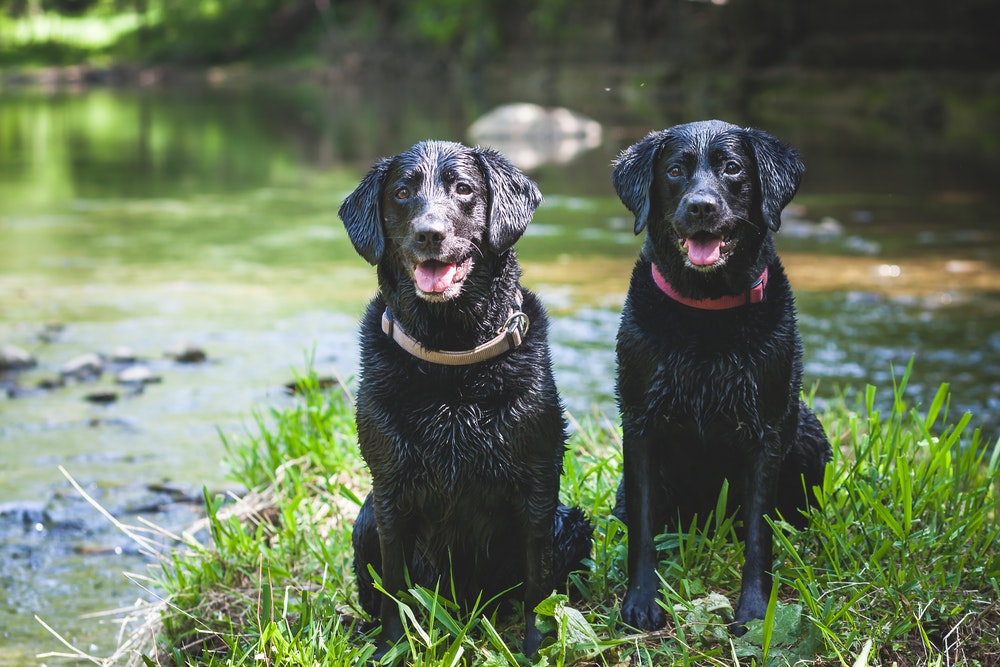
Finding the best food for your dog can be a challenge. What our vet recommends may not be easily purchased in our area or within our budget. You may have multiple dogs with a variety of food needs. Keeping their food separate may be problematic and even lead to fights.
Consider the Age of Your Pet
Puppies need diets high in calcium and magnesium, as do lactating females. However, this level of minerals can be dangerous for an older dog. Staying on top of the needs of their life stage and physical condition will take focus.
As your pet ages, you may also need to feed them lower-fat food. One of the challenges of a lower-fat diet is that their skin may dry out. The shampoo your groomer uses may need to change as your dog gets older.
Veggies
There are many veggies that your dog will enjoy. It will give them roughage, something crunchy to chew, and in the case of a carrot, a “bone” to enjoy chomping on for a time.
Green beans, fresh and one at a time, can be a good source of fiber. You may notice a slight change of color in their waste. If your dog has recently had a teeth cleaning and is showing signs of sore gums, frozen green beans can be soothing. Peas can provide some protein and celery can be both hydrating and breath-freshening.
Meats
Meat is the most bio-available protein for your dog. While some veggies, particularly beans, can help your pet get the necessary proteins for good health, they will need some meat.
As you would for a human, keep an eye on the fat content. Organic meats may be out of your price range, but you may be able to best protect your dog and your budget by investing in quality frozen meat products when things go on sale. If you are interested in crockpot recipes for your dog, try to pair meats with brown rice to soak up any exuded fat. Switching from processed dog foods to crockpot meats can shock the gut.
Fats
Fats make your dog’s food tasty. There’s a reason it’s easy to get a pill down your dog with a bit of peanut butter or a slice of cheese. In addition to the pill being sticky, it’s wrapped in yummy fat.
Even older dogs need a bit of fat, though too much will be hard on their joints. If you notice that your dog has flaking skin or is doing a lot of scratching when the air in your house gets dry, consider adding a bit of coconut oil to their treats. This fat is solid at room temperature and can reduce the itch of dry skin.
Carbs
Younger dogs need the energy to grow. They also are more active and burn more energy in their daily activities. Their food needs to contain more protein and fat than that of an older dog. The carb mix over time will change as your dog finishes growing and slows down.
As your pet ages, their gut health can be best protected with foods that offer fermentable fiber from veggies, wheat, or rice. If your dog is sensitive to wheat, it will still need some carbs that can be broken down into fermentable fiber.
When Your Pet is Sick
There are a number of pet vitamins and supplements that you can give to your pet if they become ill or as they age. Sore joints can benefit from a small dose of dog-friendly CBD.
It’s important to make changes to your dog’s diet slowly. If they have eaten one food for a long time but need supplementation or a total change-over, be ready to blend their foods so they can adjust internally without jolting the gut. A big shock to your dog’s tummy can lead to
- vomiting
- diarrhea
- skin changes
- lethargy
Give your dog time and a separate eating space if they are struggling with the change.
The right diet will keep your dog healthy from the skin in. If you notice your dog doing a lot of scratching or having digestive issues, talk to your vet. It may be time for a change.


